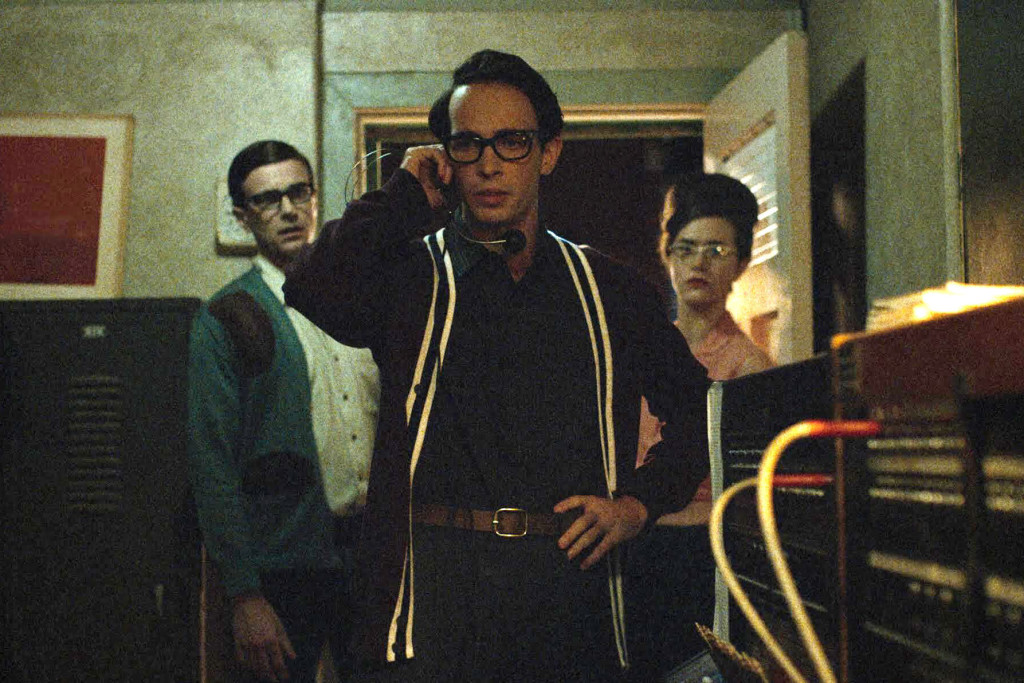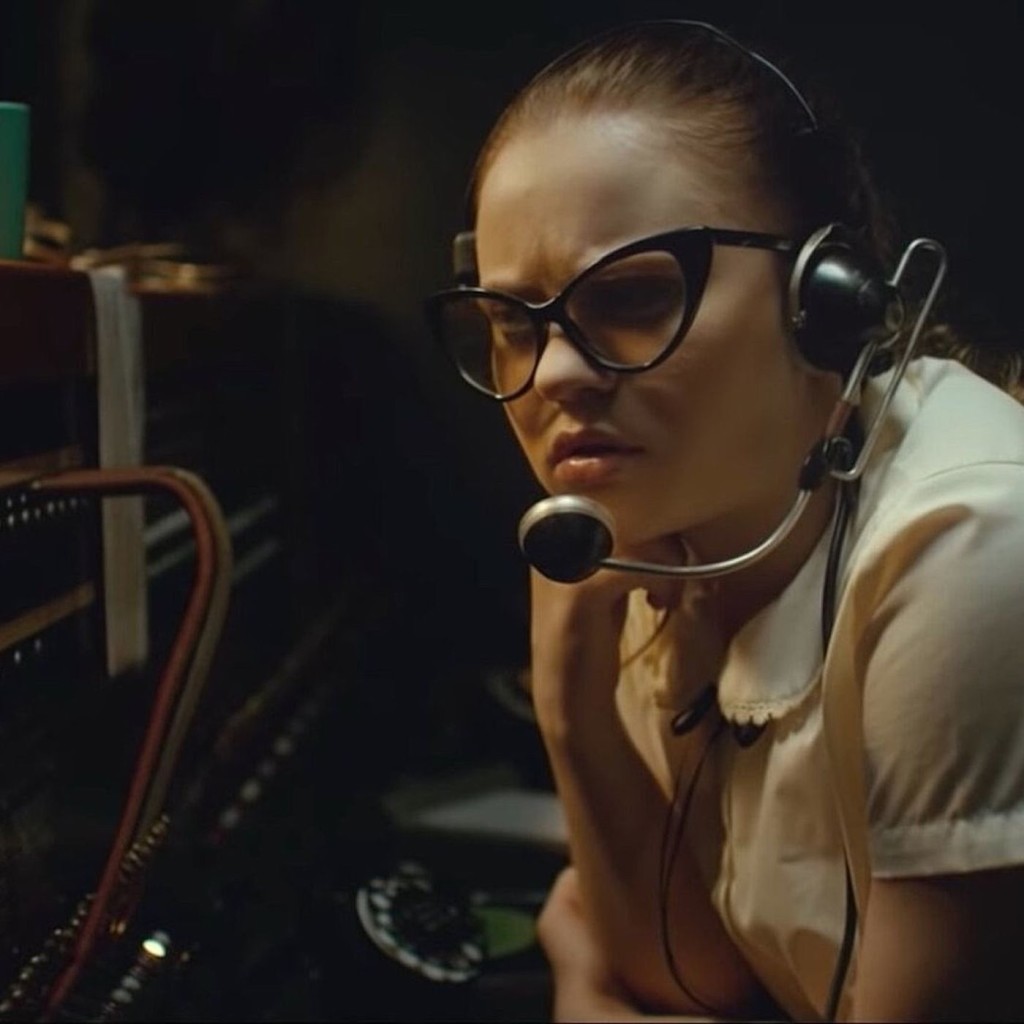Today’s movie is a prime example of the power of a small group of people working together to create art.
Genre: Sci-Fi
Premise: Set in the 1950s, a DJ and a switchboard operator living in a small town hear a strange noise coming over the airwaves and spend the night trying to decipher what the noise is and where it’s coming from.
About: The Vast of Night was a tiny film created by a small group of passionate people which would eventually get accepted into Slamdance and become one of the breakout films at the festival. Amazon would purchase it and when the movie debuted this weekend, it held a surprising 93% Rotten Tomato score, a virtually unheard of achievement for a film made by and starring people who have zero footprint in the movie business. This is director Andrew Patterson’s first film. It is writers James Montague and Craig Sanger’s first film. You’ve never seen the two leads before. So what was it about the movie that got people so revved up? Let’s find out!
Writers: James Montague and Craig W. Sanger
Details: 90 minutes
I’m all about the UFOs. Aliens visiting this planet is my jam. But it’s well-traveled Hollywood real estate and therefore you have to come with a fresh angle to stand out. The Vast of Night is one of the few movies in this genre to actually achieve this.
The story takes place in Small Town, USA during the evening of a big high school basketball game. We meet Everett Sloan, our DJ helping people at the gym set up for the game. Everett’s trying out his new audio tape recorder and having a blast interviewing people about the game.
Everett runs into Fay Crocker, a geeky female switchboard operator with a penchant for science who begins rattling off some of the crazy predictions she’s read about the future in her Popular Mechanics magazine collection. We follow the two around the school and into the quiet small town until they eventually split up to do their jobs, him to DJ and her to work the switchboard.
The Vast of Night then places us in a single profile shot watching Fay do her job for FIFTEEN FULL MINUTES. During the tail end of this session, she hears a strange noise and calls Everett to patch him in to see if he knows what it is. Everett doesn’t but wants to play it on the air to see if anybody else knows.
This leads to an older army veteran, Billy, calling in, who says he has a story to share and goes on about how he, too, heard that noise when he was deployed. After Billy’s call, an older woman, Mabel, calls in and says she needs Everett to come to her house so she can tell him something important about the noise. Everett grabs his tape recorder and Fay and they head over there. Mabel says that her own daughter was taken by aliens responsible for that noise.
Figuring that the aliens must be nearby and will probably leave once the basketball game is over, Everett and Fay grab a car and drive into the vast of night to try and locate the alien ship. They eventually do. But when the alien ship spots them, will it allow them to go back to town? Or will it make sure the story ends here?
I give the writers credit for keeping the narrative tight. That’s a little screenwriting trick you can use with plots that don’t have a lot of sex appeal. The nature of limiting the timeline to 2 hours or 3 hours or 4 hours, gives the story a false sense of urgency that tricks the viewer into feeling like the plot is moving along faster than it is.
But the real star here is the directing.
These guys had no money yet they found a way to make this feel like a movie. By the way, that’s one of the primary things producers and studios look for in directors. They’re looking for people who can make a 1 million dollar movie look like a 5 million dollar movie. Heck, Robert Rodriquez built an entire brand on that.
But back to Vast. The first thing they did was set the story in 1953 which added some production value you don’t get from your run-of-the-mill UFOs-in-the-sky movie. And they set it at night because the director couldn’t hide the telltale signs of this not being a 1950s town in the day. So that was a smart move.
He then told the story in a series of long single shots. Which is really hard to do. Especially when you have inexperienced actors. These actors are being asked to remember 10 pages of dialogue while doing complex walking one-take shots. Which is exactly why you don’t usually see that. Other directors (I’m talking indie directors, not Sam Mendes with 100 million dollars to play with) are too scared to try it. If you ruin one of those shots, you’re setting up for another 3 hours to get the next one. And there’s only so many of those takes that you get on a tiny budget like this. Yet that was the risk the director took in order to make sure his movie felt different from everyone else’s.
The director, Patterson, would also mix in these insane dolly shots. There’s one shot in the middle of the movie that pulls out of Everett’s DJ station and zooms along the ground, like a skateboarding possum on meth, through the entire town, going into the school, all in a single shot, mind you, then INTO THE BASKETBALL GAME ITSELF as its going on, goes onto the court while the game is playing, then swishes back out of the school and over to Fay in her switchboard room.
You just don’t see that in your average indie. It’s ambitious.
But the directing can’t outrun the writing issues in Vast. The primary issue is a lack of stakes. What Vast of Night attempts to do is use IMPLIED STAKES. Implied stakes are when you vaguely imply that good things might happen if the hero succeeds or bad things might happen if the hero fails.
Implied stakes don’t work well. You need CLEAR STAKES. Clear stakes are, “You better get the money by 6pm or we’re going to kill you.” Implied stakes are, “You better get the money or else.” Vast of Night is an implied stakes screenplay. We’re not sure why figuring out this sound matters other than it’s going to quench Everett and Fay’s curiosity. Is quenching curiosity “stakes?” Not where I come from.
And then you have an inevitable ending, which is unfortunate. There are so many risks in the direction and the ending is something we figure out two minutes after the strange noise appears. I mean, what else can you do really? You’re building up to this UFO. Obviously you’re going to show it. (spoilers) And since you need to add some extra pop, you’re probably going to have your leads beamed up to the ship. And that’s exactly what happens.
On the plus side, the dialogue is occasionally fun. I enjoyed Fay’s fascination with the future in the opening walk. And Billy’s call-in to the station was a highlight. The best performance of the movie comes from a character who never appears on screen. And while it’s easy to focus on his performance, Montague and Sanger gave him some juicy dialogue to work with.
In the end, this is a case of young fresh talent making a movie. There were always going to be missteps. But the pros overwhelm the cons when it’s all said and done. The Vast of Night is worth checking out.
[ ] What the hell did I just stream?
[ ] wasn’t for me
[x] worth the stream
[ ] impressive
[ ] genius
What I learned: Today’s what I learned is on you guys. I watched Space Force this weekend, which was awful. But I couldn’t figure out why it was awful. It’s not a bad idea. When I think Steve Carrel and Space Force, I imagine funny stuff. And I love 75% of the cast. Yet nothing in the show works. And it’s hard to figure out why other than to say it’s just not funny. So for those of you who saw it, educate me. What can I learn from Space Force on how not to write a comedy TV show?



